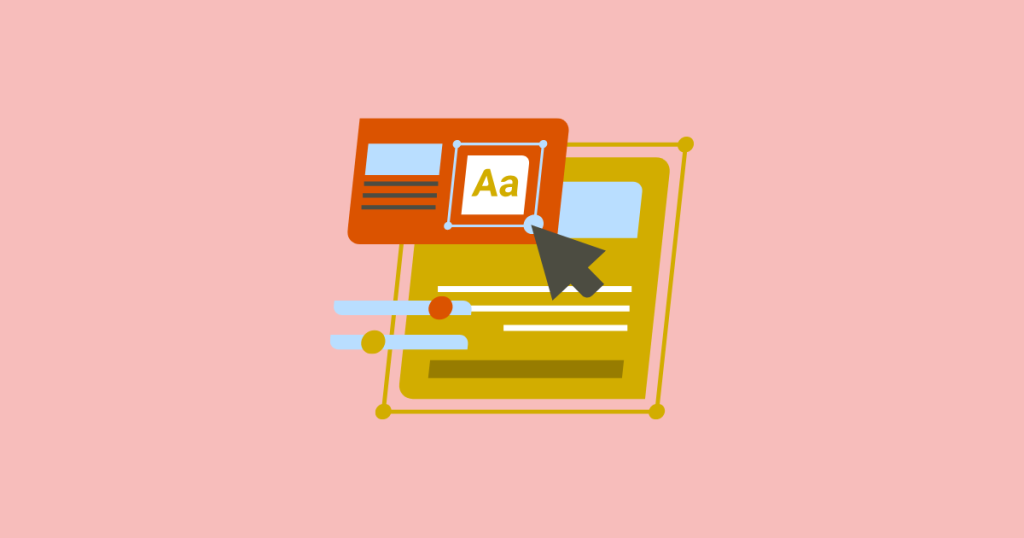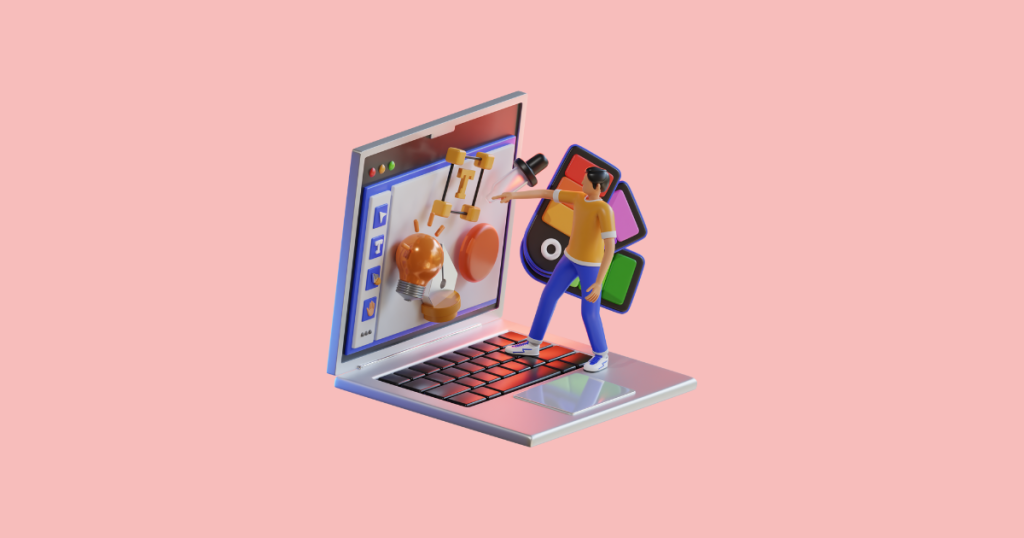Unlike a typical group brainstorm, a design sprint is a time-constrained, structured process used to solve complex problems, develop new products, or improve existing ones through rapid prototyping and user feedback.
Originally developed at Google Ventures (GV) by Jake Knapp, the design sprint method compresses months of work into just five days by bringing together a team to brainstorm, prototype, and test existing ideas with real users.
In this guide, we’ll break down: the step-by-step process, benefits of running a design sprint, common challenges and how to overcome them, and best practices for success
Let’s dive into the framework and how it can help teams innovate faster!
What is a Design Sprint?

A design sprint is a five-phase process used by companies to answer critical business questions and rapidly develop solutions.
It blends design thinking, user research, and prototyping into a structured workflow that helps each team member make informed decisions quickly.
The five day process is:
- Understand – Identify the problem and define success
- Sketch – Generate potential solutions
- Decide – Choose the best idea to prototype
- Prototype – Build a realistic model for user testing
- Test – Get real feedback from users
This agile innovation process reduces risks by validating ideas before heavy investments in development.
Why Use a Design Sprint?

Companies use design sprints to:
Accelerate innovation – Quickly test ideas without wasting resources
Reduce risk – Validate concepts before full-scale development
Improve collaboration – Align cross-functional teams
Enhance user experience – Prioritize user needs from the start
By the end of the sprint week, your team walks away with a user-validated, tested solution, not just an idea, but real insights based on feedback.
The Core Principles Behind it
At the heart of every sprint week are a few key ideas:
- Speed Over Perfection: It’s not about building the perfect product; it’s about learning fast and adjusting early.
- Cross-Functional Collaboration: Designers, developers, marketers, and decision-makers all work together in the same room.
- Focus: For one week, the sprint team clears their schedules to focus entirely on solving one big challenge.
- Empathy for Users: Real user feedback guides the process. You’re not guessing, you’re learning directly from the people who matter.
- Decisions, Not Discussions: Instead of debating endlessly, the team uses structured methods to converge on decisions quickly.
These principles keep the sprint on track and ensure that every hour spent contributes to building something meaningful.
The 5-Day Design Process
When the sprint begins, the team jumps into a highly focused, step by step plan that unfolds over five days.
| Day | Phase | Key Activities |
|---|---|---|
| Day 1 | Understand | Define key questions, clarify the challenge, business goals, and user needs |
| Day 2 | Sketch | Brainstorm and sketch potential solutions using design thinking. |
| Day 3 | Decide | Vote on the best ideas and create a storyboard |
| Day 4 | Prototype | Build a rapid, testable prototype |
| Day 5 | Test | Gather user feedback to refine the idea |
This design sprint methodology is highly structured, allowing teams to move fast, reduce uncertainty, and build products users love.
Benefits of a Design Sprint

- Faster Decision-Making – Rapidly progress through ideas, testing, and feedback without wasting resources.
- Cost-Effective – A method optimized to test ideas before full development, saving both time and resources.
- User-Centric – Focuses on real user feedback.
- Improved Collaboration – Brings together designers, developers, and stakeholders.
Companies like Google Ventures, Airbnb, and Slack have successfully used design sprints to launch game-changing products.
Common Challenges & How to Overcome Them
Even though design sprints are highly effective, they come with challenges:
| Challenge | Solution |
|---|---|
| Time Constraints | Keep discussions focused and avoid distractions |
| Stakeholder Buy-In | Show case studies of successful sprints |
| Lack of User Testing Participants | Use online tools to recruit testers quickly |
| Unclear Goals | Define success metrics before starting |
By addressing these challenges, teams can maximize the impact of their sprints.
Best Practices for Running a Successful Design Sprint

Assemble a cross-functional team – Include designers, developers, marketers, and stakeholders
Have a strong facilitator – Keep the process moving efficiently
Use real user feedback – Ensure prototypes are tested by the right audience
Stay flexible – Adapt the sprint process if needed
These best practices ensure a productive, user-focused, and results-driven DS. It’s like hitting fast forward on the product development process.
Web Reviews & Case Studies
💻 Google Ventures’ Official Design Sprint Guide
💡 How Airbnb Used Design Sprints
📊 Slack’s Design Sprint Experience
📰 New York Times coverage of design sprints and their role in reshaping modern innovation.
These case studies show how leading companies have transformed ideas into successful products using design sprints.
🚀 Sprint Week Survival Guide
Use timeboxing religiously—stick to scheduled times even if discussions aren’t “finished”
Assign a “timekeeper” role that rotates daily to keep energy fresh
Create a “phone parking” area to minimize distractions during work sessions
Document everything—decisions, rejected ideas, and reasoning for future reference
Encourage “Yes, and…” thinking during sketching—critique comes later
Define what “success” looks like for your sprint before you start Day 1
⚠️
Common Sprint Killers to Avoid
The biggest sprint killers: Trying to solve multiple problems at once, letting perfectionists slow down prototyping, skipping user testing because “we know our users,” and not having a real decision-maker in the room. These will derail your sprint faster than technical problems ever will.
Real-World Examples of Sprints in Action
Here are a few ways companies have used the sprint process to innovate faster:
Slack
Before launching their messaging platform, Slack used sprints to explore how teams communicate and what pain points exist in existing tools.
Blue Bottle Coffee
They ran a sprint to test how users would respond to online coffee subscriptions and found surprising demand.
LEGO
LEGO used sprints to explore digital play ideas for kids, validating them with young users before going to market.
Your Startup?
Even small teams can use design sprints. You just need a focused problem and a week to collaborate.
FAQs
1. How long does a design sprint take?
It usually lasts five days, but some companies run shorter (3-day) or extended (10-day) versions based on complexity.
2. Who should participate in a design sprint?
A typical sprint team includes designers, developers, product managers, marketers, and decision-makers to ensure diverse perspectives.
3. Do design sprints replace traditional development?
No, design sprints are used to validate ideas quickly before committing to full-scale development.
4. Can remote teams do design sprints?
Yes! Tools like Miro, Mural, and Figma make it easy to run virtual design sprints.
5. What’s the difference between a design sprint and agile development?
A design sprint is a short, intense problem-solving process, while agile development is an ongoing iterative process for software development.
6. How do you recruit users for testing?
Use platforms like UserTesting, Respondent.io, or social media to find real users for feedback.
7. What industries benefit from design sprints?
Tech, healthcare, finance, e-commerce, and many other industries use design sprints to innovate quickly.
8. How do you measure the success of a design sprint?
Success is measured by user feedback, prototype validation, and stakeholder alignment on the next steps.
Conclusion: Should You Try a Design Sprint?
If your team is stuck, unsure about what to build next, or in an endless debate cycle, a design sprint could be exactly what you need.
In just five days, you can clarify your biggest challenge, create a solution, and test it with actual users before writing a single line of code.
It’s fast, focused, and effective. And whether you’re a startup founder, product manager, or designer, the design sprint can help you move from uncertainty to clarity.
So, what’s the big question your team needs to answer?
Maybe it’s time to sprint your way to the answer, don’t let new ideas wait.



